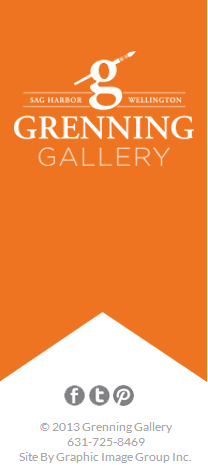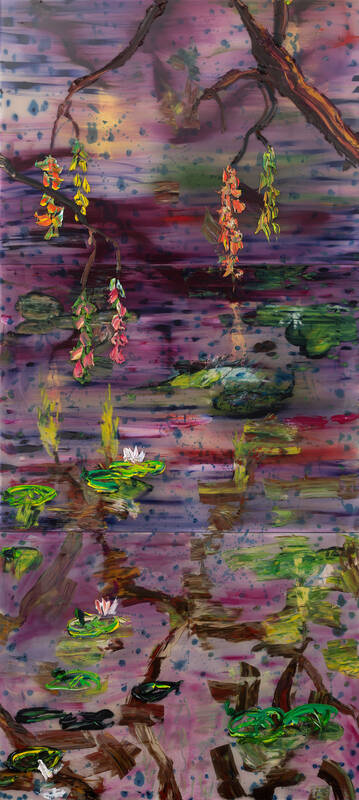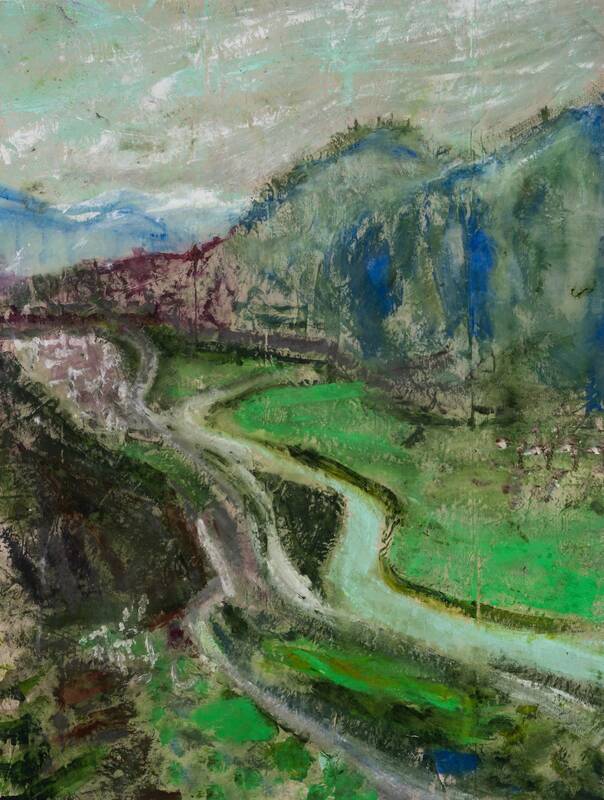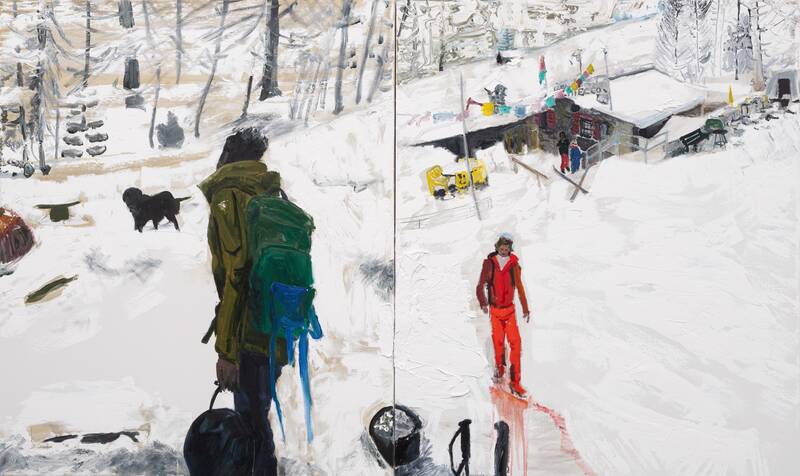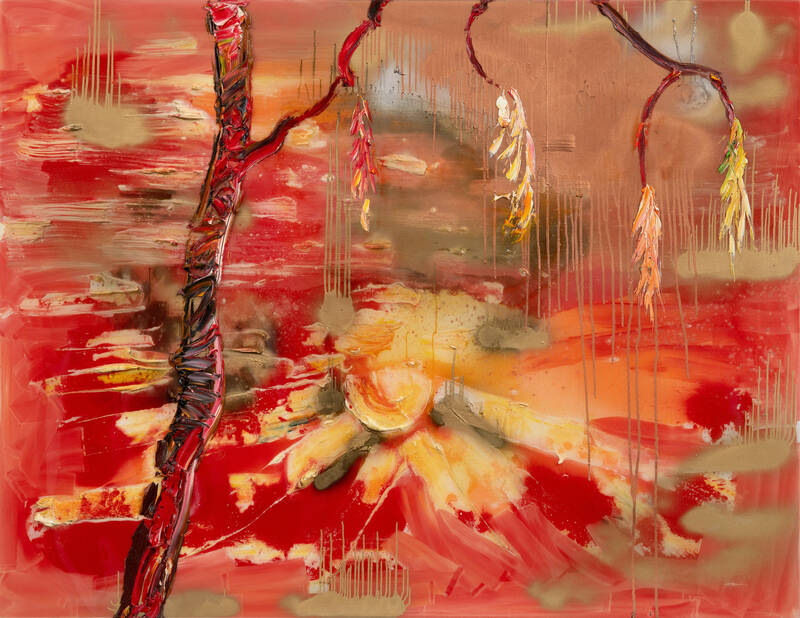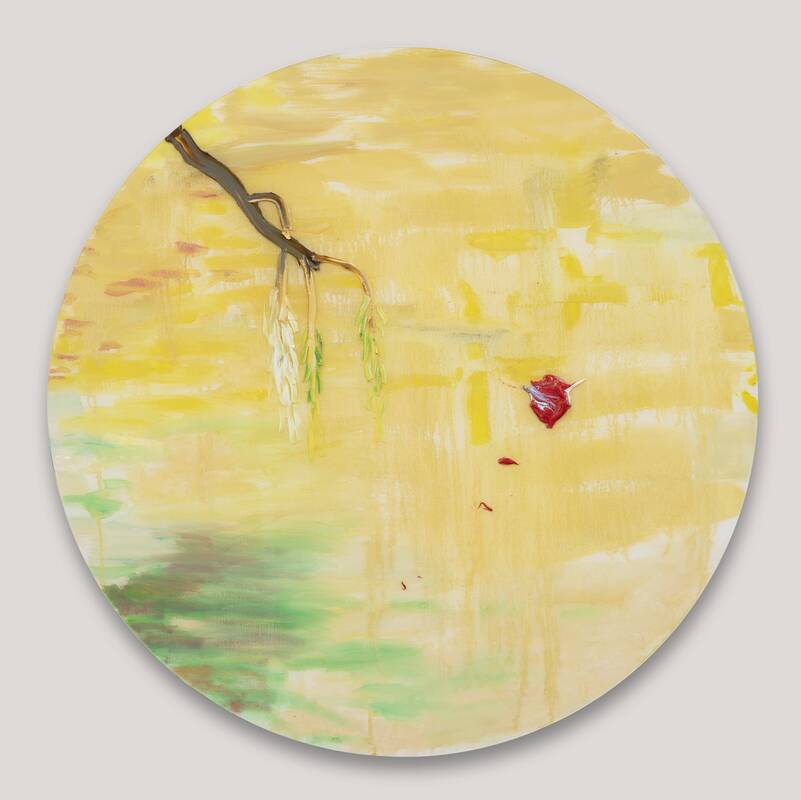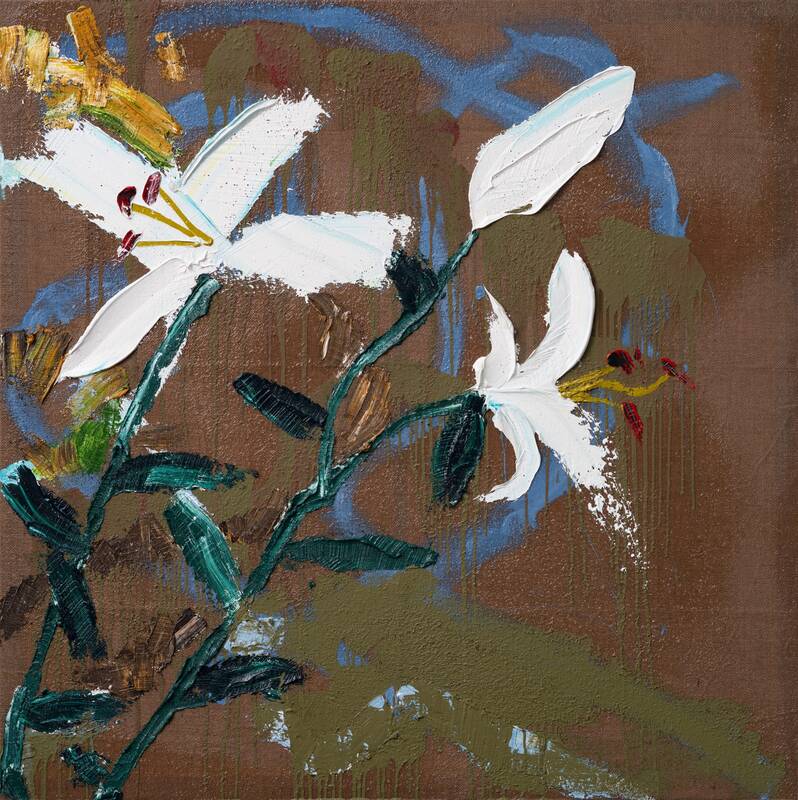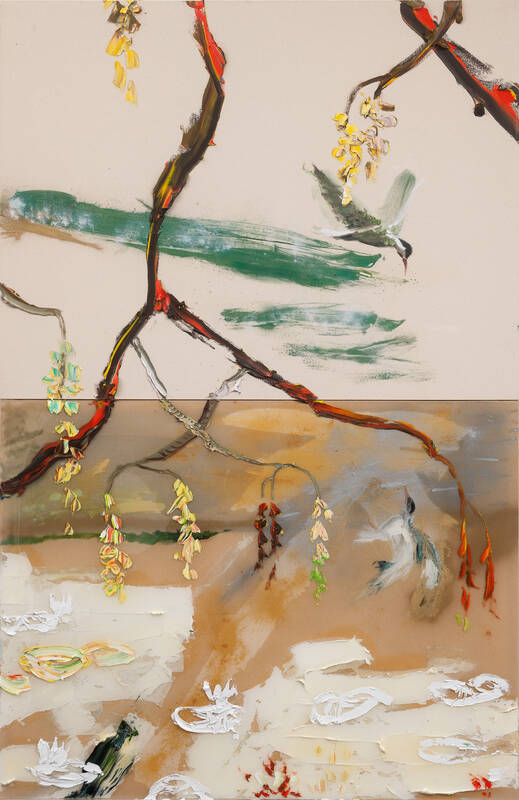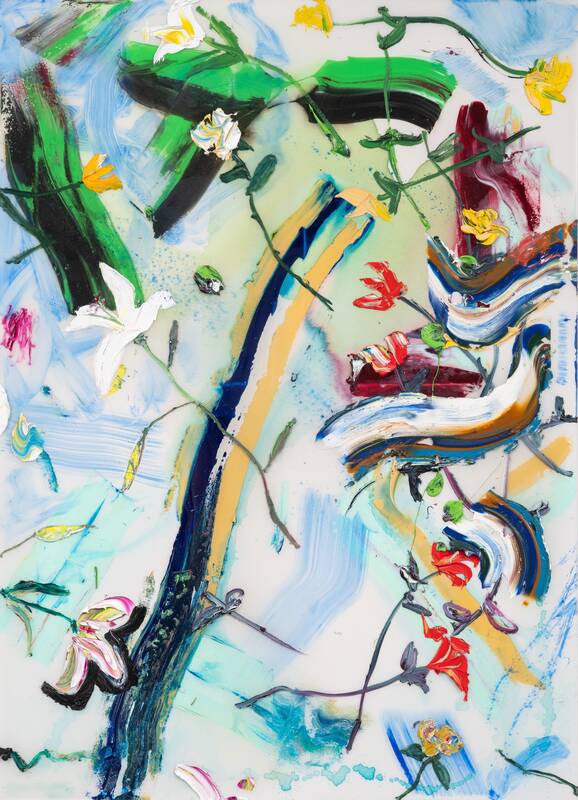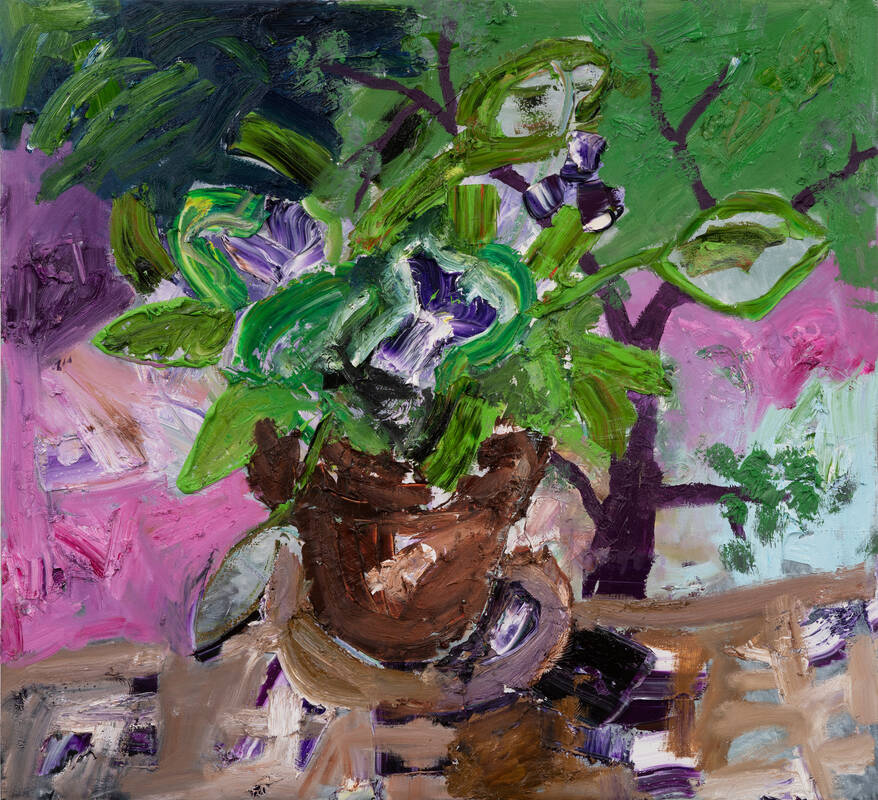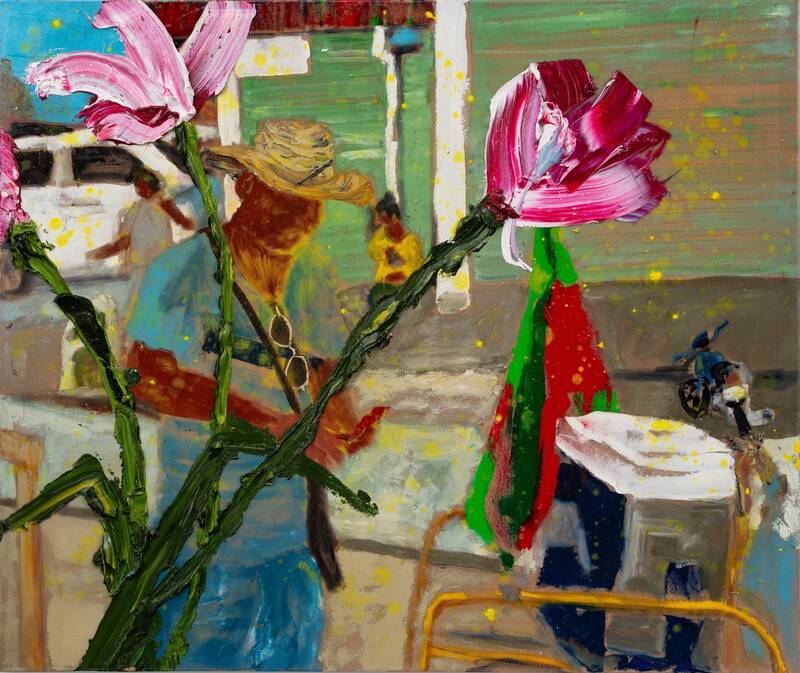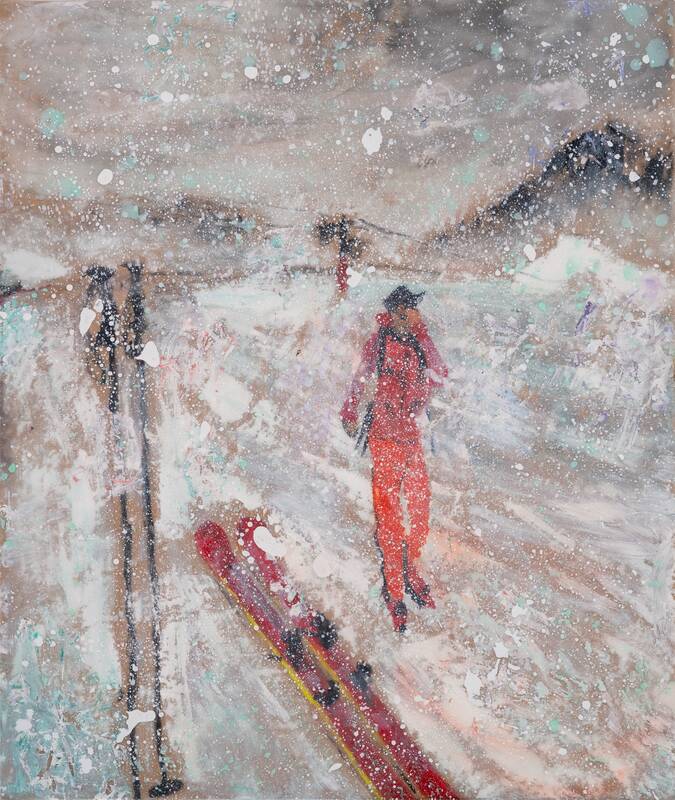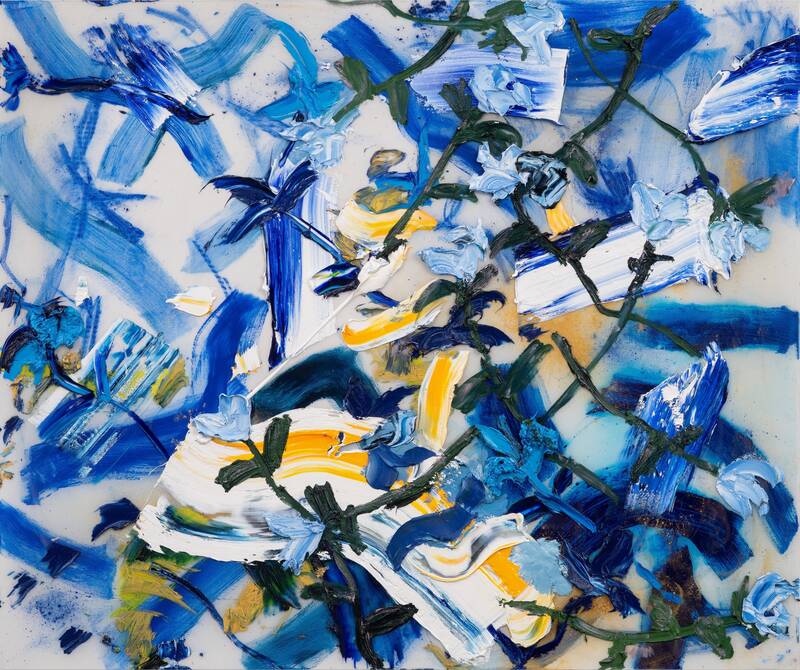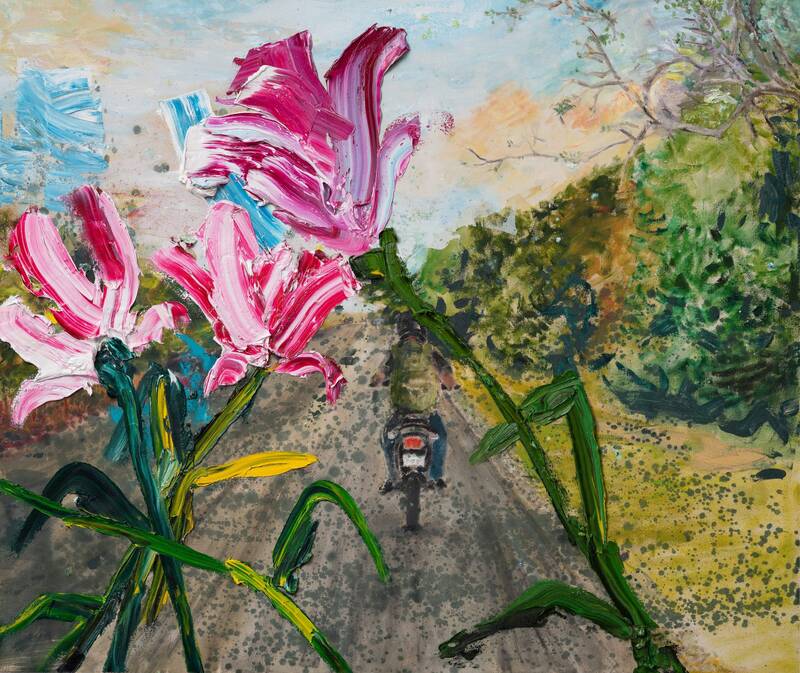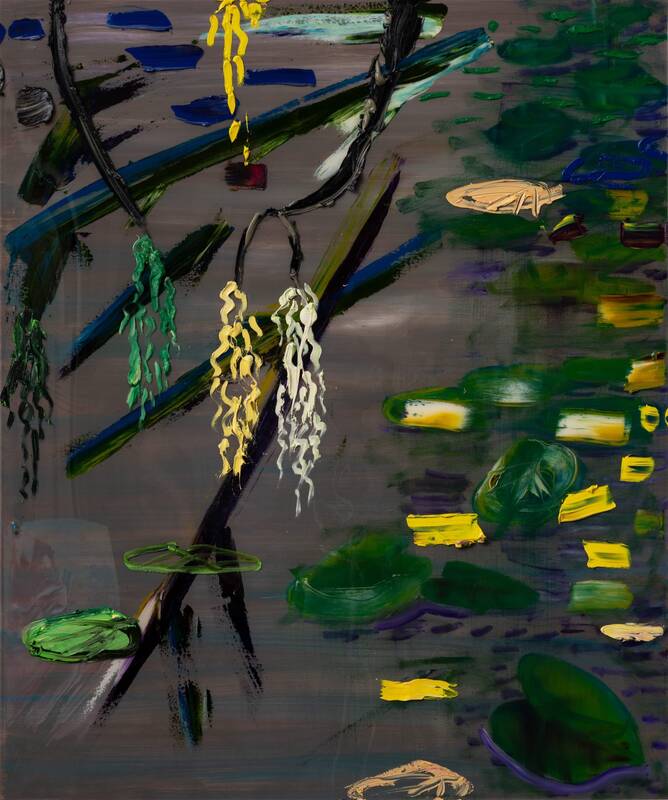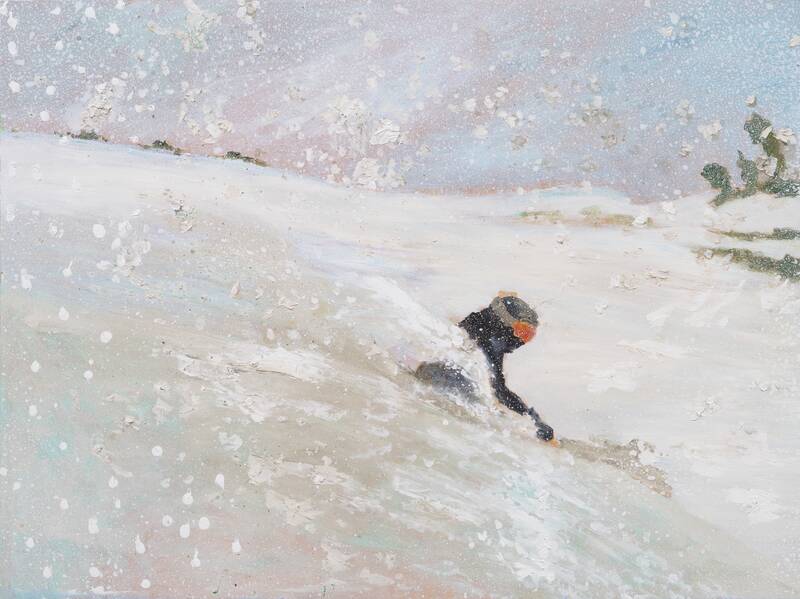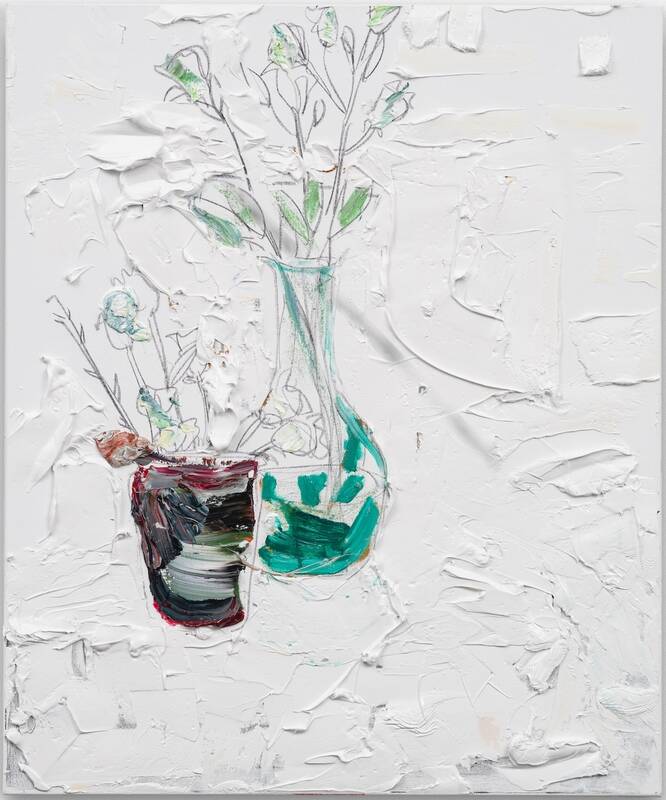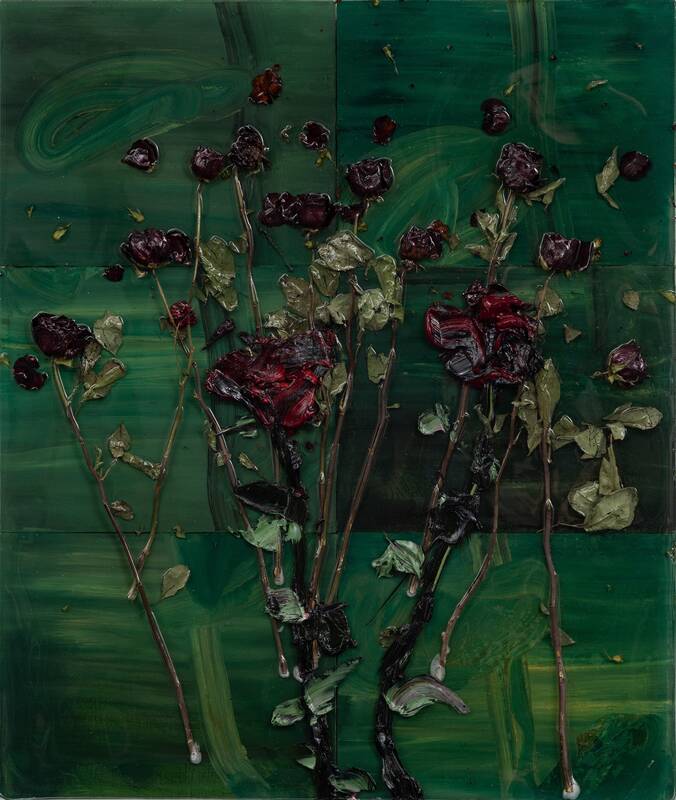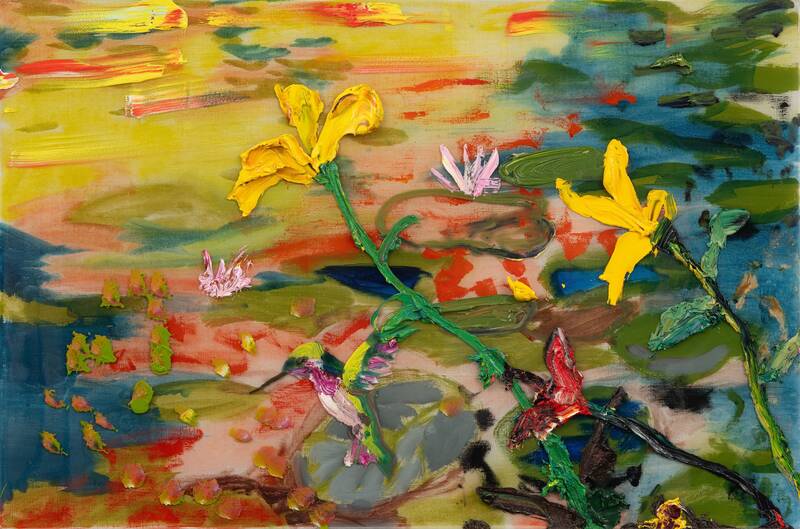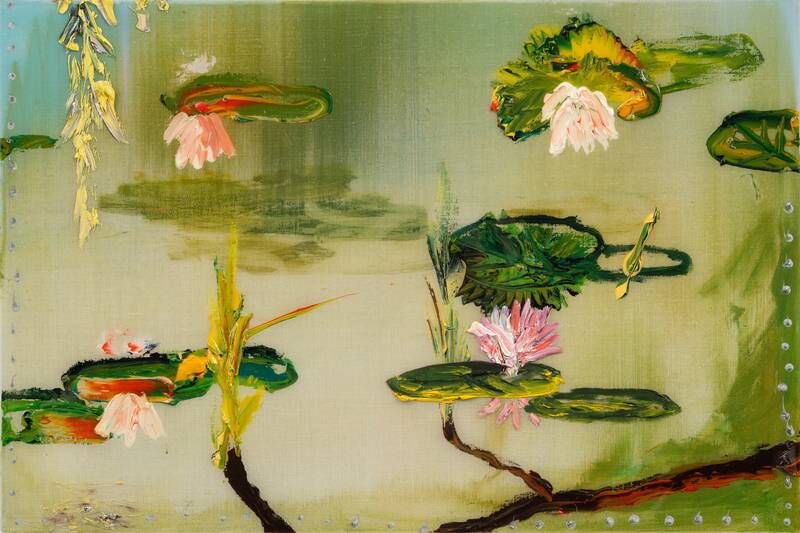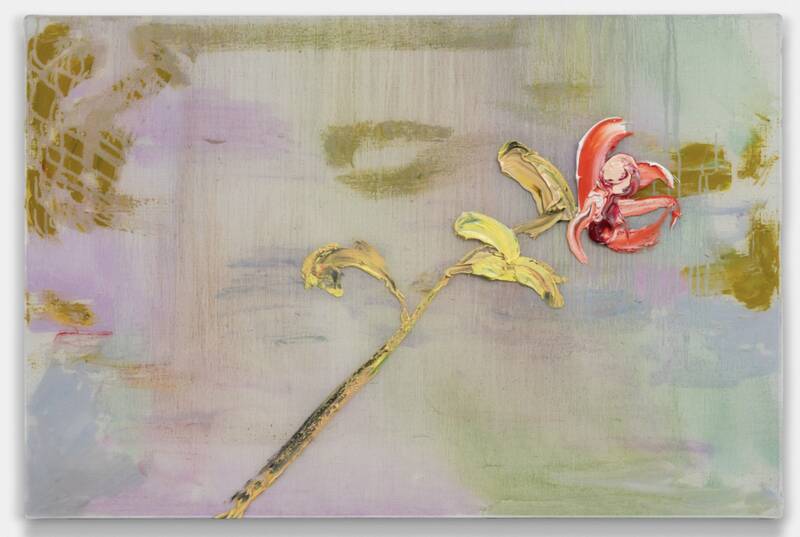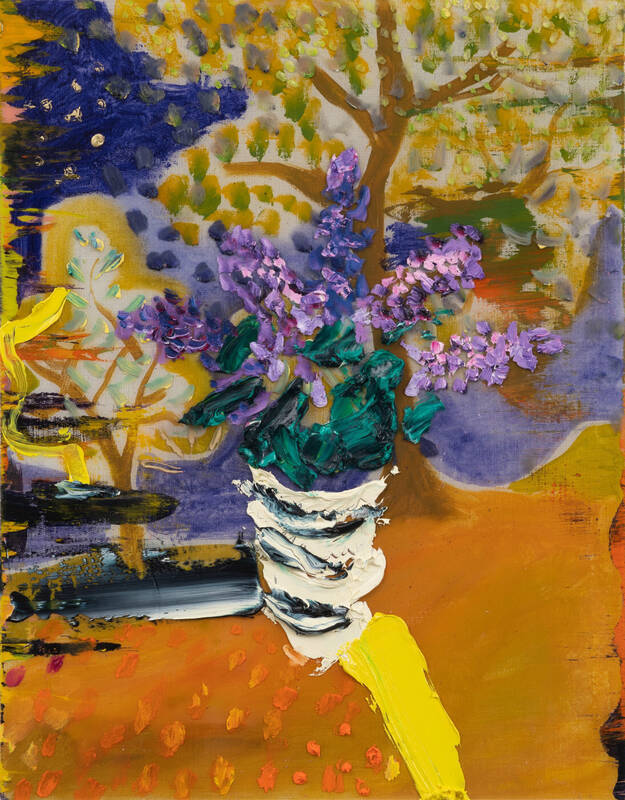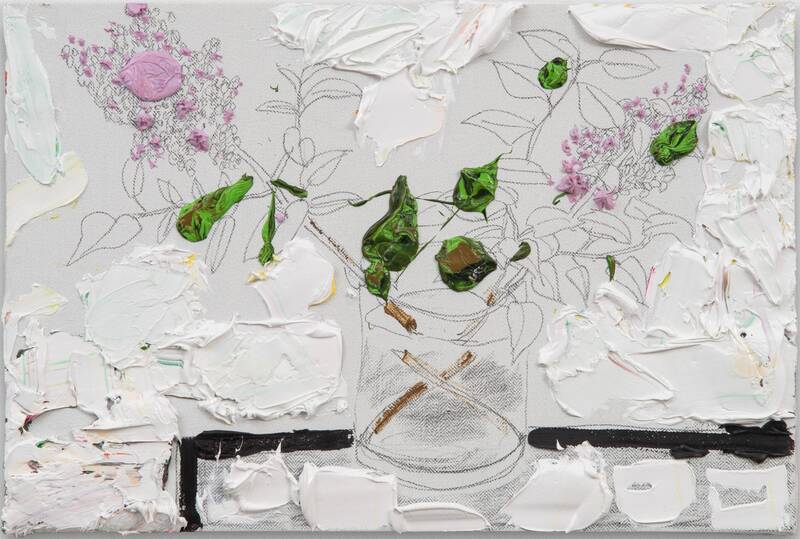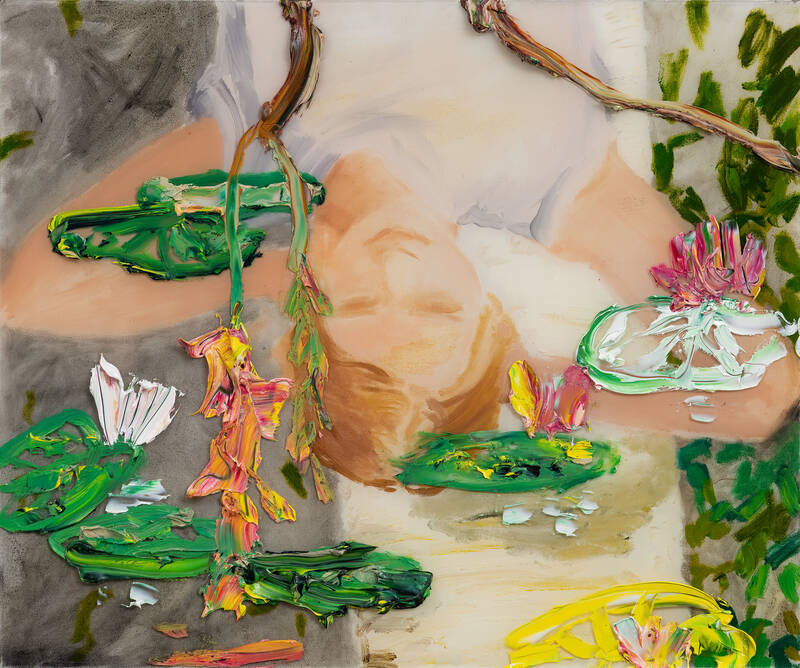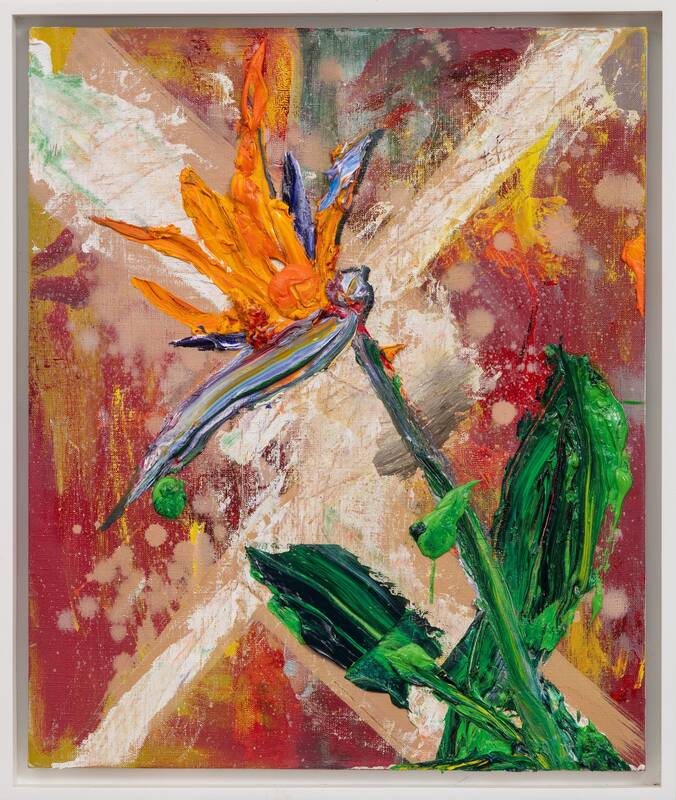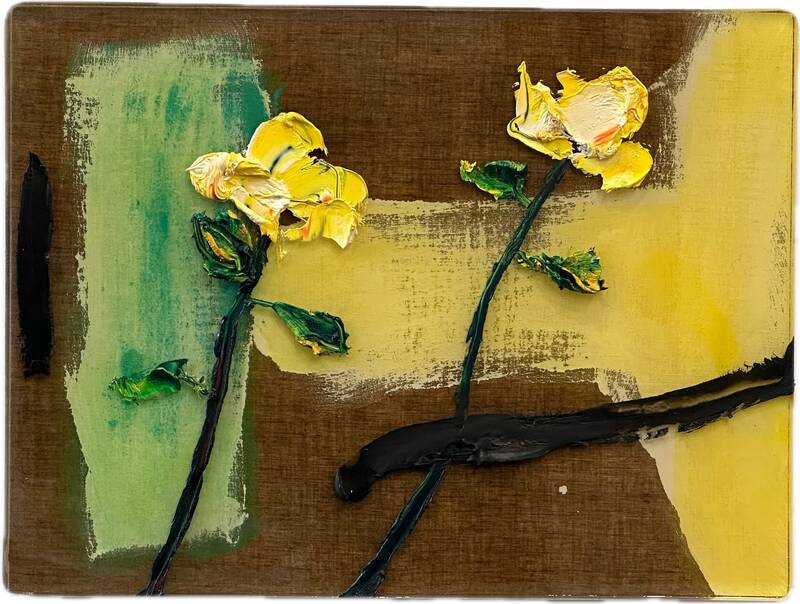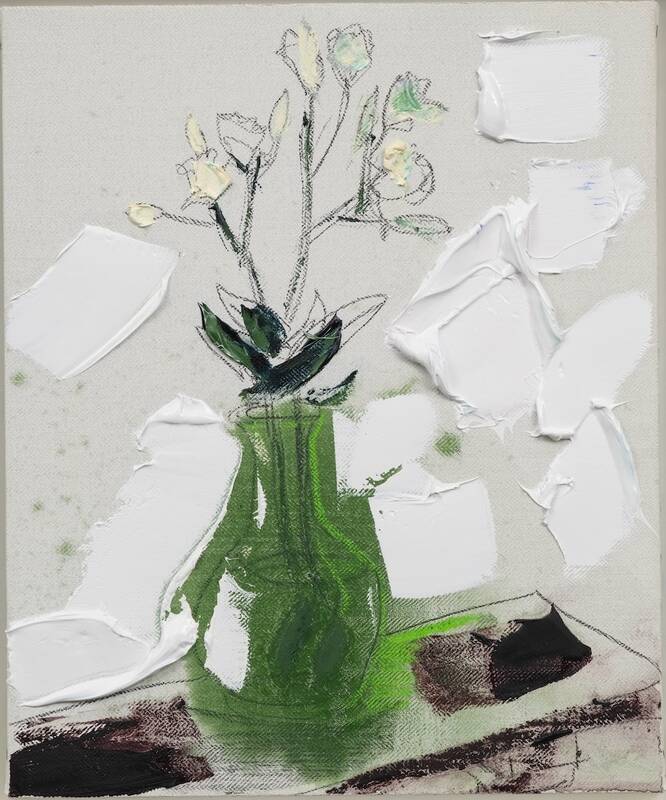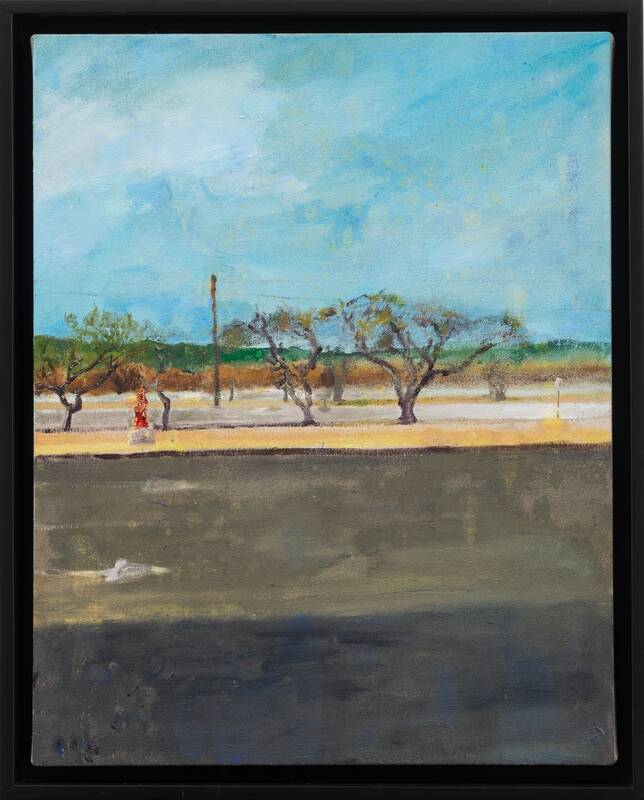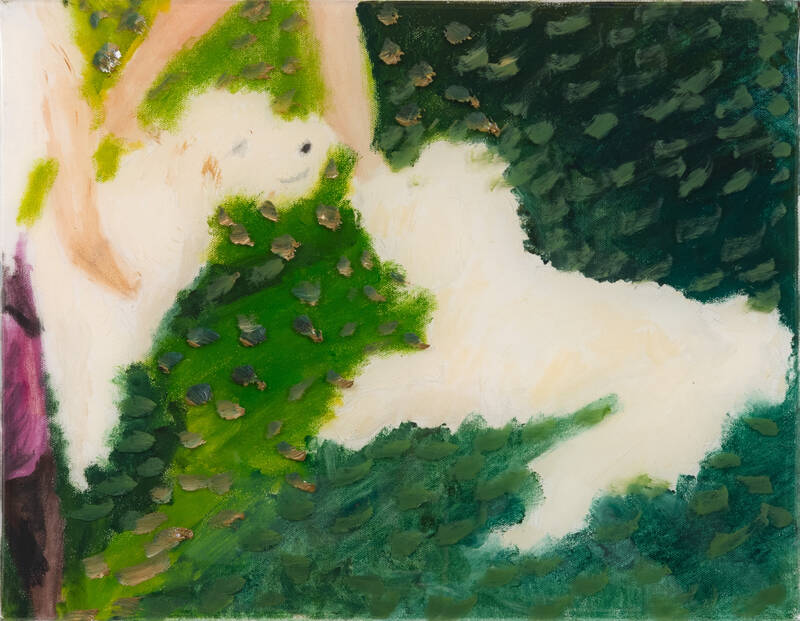
The Grenning Gallery is pleased to present our fourth annual Solo Exhibition for local expressionist painter, Darius Yektai. This exhibit will be on view from Thursday August 8th through Sunday August 25th. Please join us for an Opening Reception on Thursday August 8th, from 6:30-8:00 PM.
One question most asked by visitors to the gallery is, “Are these artists local?” and although the Grenning Gallery represents many artists who are international or out of state, we are delighted to host to several exceptional local artists. Darius Yektai (b. 1973 Southampton, NY) is our local classical expressionist, whose work is often inspired by his immediate surroundings; the ocean, flowers, his home in the Long Pond Greenbelt, and often, the viscosity of paint itself.
This year, Yektai offers new pieces of his ever popular and infinitely mesmerizing “Waterlily” paintings, as well as a bold continuation of his abstract “Falling Flower” series. However, what we’re most excited about is a new series of paintings from his recent travels from colorful Costa Rica to snowy Chamonix, France.
The bold Costa Rica paintings were the first new paintings we saw at his studio in January. Every Grenning staff member agreed, these would be shown in Yektai’s Solo Show in August.
Surfing is one of Yektai’s favorite pastimes, and you will find him at the ocean in Sagaponack every morning in summertime. Every winter, Yektai departs our frosty beaches in search of warmer sand and satisfying surf. Costa Rica has become one of his favorite spots to retreat to, and this year he generously invites the viewer to join him on his tropical spree.
Large, bold flowers molded by his recognizable swaths of paint overlay scenes of everyday life in Central America. In Nicoya Street, we’re greeted by a local vendor selling drinks from a cooler. Figures mill about in the background, tending to their own separate matters. A dirt bike is spotted outside a building just beyond our vendor, kickstand engaged—a preface to the next painting in this series Costa Rica Rider.
Here, a figure motors up a road flanked by sumptuous greenery on a naturally picturesque sunny day. Again, gigantic pink flowers eclipse the entire scene…perhaps a way for the artist to stamp his mark upon a foreign place he’s grown to feel at home within. In both compositions, Yektai splats thick, oily paint atop his landscape in a way which adds to the atmosphere – it’s as though we can feel the humidity standing on the sidewalk in Nicoya Street, and smell the dew-covered jungle as we speed along the road in Costa Rica Rider. Even though he is venturing outside of his usual subject matter, we are still seeing this new setting through a lens that is unmistakably Yektai’s.
There are several spaces of Darius Yektai’s mind that are yet to be discovered by his viewers. One style of painting only accounts for a tiny corner in the artist’s broad-roaming psyche. Although most know him for his audacious handling of vibrant paints and experimental media, at his core, he is an enthusiastic student of art history; and most abstract artists in history began painting from what they saw, resulting in a traditional landscape or portrait. There is a stylistic spectrum that Yektai is constantly fluctuating within—on the one end, traditional naturalist paintings of recognizable scenes; and on the other end, a wild abstract field of shapes and color which allow the viewer’s mind to wander. First View, Liberia Airport falls into the latter category. There is no resin, no splatter, no enormous flowers intersecting the scene. However, we get a clean and quiet snapshot of a view he yearns for each winter – a view that, upon first sight, confirms that’s he’s once again in his happy place – a warm place to surf.
Fast forward to nearly 6000 miles Northeast to the majestic mountains of Chamonix, France. Again, Yektai generously offers us another observation upon arrival to his destination with First View of Switzerland through the Alps by Train—this time on a grand scale. Whereas First View Liberia is a scene from a small airplane window, Yektai hunched over in his seat catching what sunlight he could as the plane raced to a halt, First View Switzerland displays Yektai’s impressions as he was situated on a slow-moving train with big windows, allowing the artist to soak in the majesty around him. Although not entirely naturalistic in execution, Yektai shows unusual restraint by utilizing only one medium throughout the entire canvas, and the overall composition is legibly digestible as a conventional landscape; albeit mystical and impressionistic. Furthermore, this painting recalls the delicate stain and scumble technique of ancient Chinese scroll paintings on rice paper.
Snow appears to be a natural subject for Yektai’s expressionist and textural style of painting—as displayed in his series of paintings from the French Alps. Layers of fluffy snow translate almost effortlessly to the luscious white, lavender, blue, and even red paint depicting the subtle shifts in light and shadows on the mountains. In Powder Day a skier turns quickly in the same way Yektai uses his paint brush—with a quick and easy whip—and with similar effects: a spray of snow (paint) in the atmosphere (panel). This time, the splatter effect implies a frigid environment – cold and surrounded by flurries.
In Lunch on the Slope: Courmayeur, we’re placed atop the snow-covered crag, with Yektai in the foreground bundled in his parka and carrying bags of ski equipment. Compositionally, he is very successful at putting the viewer IN the snow; gracefully directing our eye from one subject to the next.
Yektai is turned away from the viewer, his attention fixed on a black dog standing in the snow, just ahead. His ski-companion dressed in a vivid scarlet snowsuit, leads our eye up to the venerated Ristorante Chiecco, emphasized by colorful flags which invite skiers inside for a luxurious break from the elements and fine Italian cuisine. The forest in the background is made up of jagged grey vertical lines. The raw canvas peeking out from beneath the “snow” underscores a sense of distance.
Obviously, pronounced, thickly painted flowers are still very much a staple in Yektai’s oeuvre. This year, we have two 60-inch-square paintings of White lilies. In Large Lilies Square, buttery white paint blossoms from dark green stems ascending from the lower right. The background is a joyous abstraction with bright yellow and cool teal hues. In Large Lilies Jute Square the same white flowers reach out, this time from the lower left. In fact, the two large paintings could make up a single diptych and resume as a consistent single composition. Quite the reverse from the former, this canvas takes advantage of the raw jute, which makes up the most of the flower’s backdrop.
An exciting new series out of Darius Yektai’s studio this year, shows reflections of nature and people—a continuation of the Waterlily theme, but now more than ever, highlighting the reflectiveness of the water represented by the poured resin on top of and underneath the oil paint. It becomes muddled where nature stops, and the reflected image starts. In Skimming Tern, a bird flies along the surface of a pond, a glittery trail of paint in its wake amongst an otherwise nearly untouched canvas—save for the long-limbed drooping branches of willow trees. The branches reach across the center of the diptych, confirming to us this is one painting made from two canvases. The lower canvas presents the reflected image of the bird, amidst a neutral palette of waterlilies. Of course, a layer of reflective resin bolsters this claim.
Created within the artist’s Sag Harbor studio, The Patio Lesson celebrates Yektai from all angles; large tulips in a white ceramic vase, a distant landscape with trees on a hill, and ghostly outline alluding to a figure seated on a piano stool. A wide-checked tablecloth adorns the surface set for the tulips, each line holding a variety of colors mixed within the brushstroke. Yellow leaves seem to sprout from beneath the table, signaling a setting abundant with florae. A distant landscape beneath a blue-sky peaks out of the upper right background, like a window to beyond from the foreground. This entire composition is Yektais response to Henri Matisse’s 1916 painting “The Piano Lesson” which presents the artist’s living room, a still life atop the piano, seated figures to flank both sides, and a large window, presenting a slanted view of flat “green” allows for only a peek at what dwells beyond. Matisse, who is known for his latent use of vibrant colors instead uses a monochromatic palette of greys. I believe Yektai takes inspirational composition from this 1916 painting, but his palette is inspired by an earlier Matisse circa 1905, The Joy of Life.
Furthering this vision of bright, joyous hues, Yektai embraces the fauve’s vigorous color palette in his latest Falling Flower series. Aptly titled, these abstractions are emphatically whimsical, presenting flowers scattered amongst slapdash lines and shapes which blot atop and stain the clean white background.
